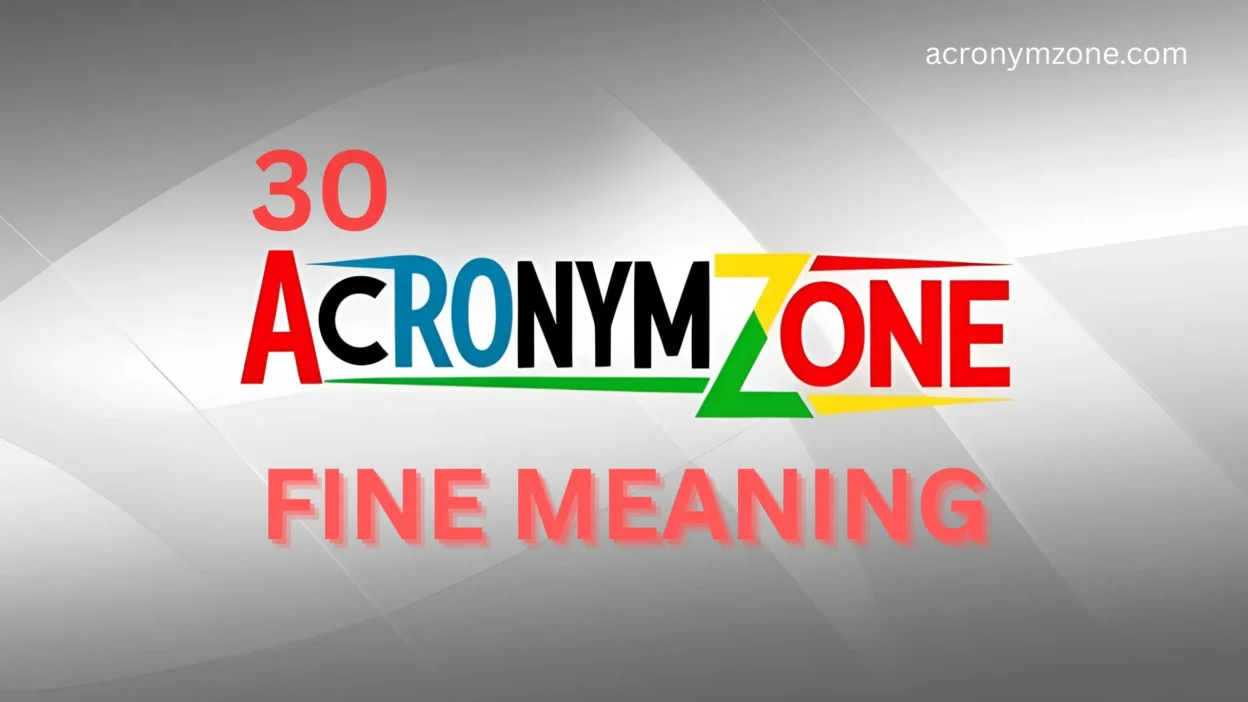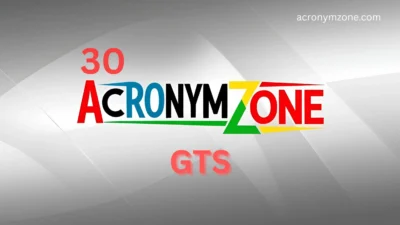“Fine” is one of the most versatile words in the English language. It can mean okay, delicate, high quality, slight, or even a penalty. Depending on tone and context, it might convey satisfaction—or barely concealed annoyance. Think about it: when someone says “I’m fine,” are they really?
Because “fine” is so vague, replacing it with a more specific alternative can help you communicate more clearly, especially in writing or emotionally charged conversations.
In this article, we’ll unpack the word “fine,” explore its emotional nuances, and introduce 30 alternative words and acronyms—each tailored for specific contexts and tones. You’ll find:
- A definition
- A quick example
- And guidance on when to use it
🔤 30 Alternatives to “Fine” and When to Use Them
- Okay
Acceptable or not bad.
“The presentation went okay.”
👉 Use for casual conversations or neutral feedback. - Good
Slightly better than okay.
“The meal was good, not amazing.”
👉 Friendly and neutral—safe for most casual settings. - Decent
Respectably okay, with a hint of restraint.
“He did a decent job on the project.”
👉 When you want to be polite but not overly enthusiastic. - Acceptable
Meets minimum standards.
“The results were acceptable, though not impressive.”
👉 Use in formal or evaluative contexts. - Satisfactory
Adequate, meeting expectations.
“Her performance was satisfactory.”
👉 Often used in business or education. - Pleasant
Mildly enjoyable or agreeable.
“We had a pleasant conversation.”
👉 Softer and more positive than “fine.” - Polished
Refined or well-executed.
“His speech was polished and confident.”
👉 Good for describing presentations or appearances. - Elegant
Graceful and stylish in a subtle way.
“She wore an elegant dress.”
👉 Use for style, taste, or behavior with sophistication. - Exquisite
Extremely beautiful or delicate.
“The painting is absolutely exquisite.”
👉 Use for art, taste, or refined appreciation. - Sublime
So beautiful it’s almost spiritual.
“The view from the mountain was sublime.”
👉 Ideal for poetic or awe-inspiring moments. - Delicate
Fine in texture or structure; fragile.
“The fabric was delicate.”
👉 Physical descriptions, especially in fashion or food. - Refined
Elegant and cultured.
“His manners are very refined.”
👉 Use in formal or classy contexts. - Thin
Small in measure, often literal.
“The fine thread was hard to see.”
👉 For physical or technical usage. - Minor
Not serious or important.
“It was a minor issue.”
👉 Use when downplaying problems. - Nominal
Very small or symbolic.
“He paid a nominal fee.”
👉 Often used in finance or legal terms. - Trivial
Unimportant or insignificant.
“That’s a trivial concern.”
👉 Use to contrast more serious issues. - Fair
Moderate quality or condition.
“The weather was fair today.”
👉 Balanced and neutral, with no strong emotion. - Respectable
Deserving of regard; satisfactory.
“They made a respectable effort.”
👉 Use when acknowledging effort without overpraising. - Dainty
Small, delicate, and pretty.
“She picked up the dainty cup.”
👉 Use in aesthetic or design contexts. - Graceful
Elegantly refined and subtle.
“Her movements were graceful.”
👉 Good for describing motion, art, or performance. - Impeccable
Faultless or flawless.
“His taste is impeccable.”
👉 Use for high praise—better than “fine.” - Neat
Tidy and orderly.
“Her handwriting is neat.”
👉 Often used for small, clean visuals or tasks. - Crisp
Clear, clean, and sharp.
“The air was crisp and cool.”
👉 Descriptive and sensory-friendly. - Prim
Proper and neat.
“She kept a prim appearance.”
👉 Slightly old-fashioned; implies order and restraint. - High-quality
Excellent in standard.
“This is high-quality leather.”
👉 Specific and more formal than “fine.” - Premium
Top-tier quality.
“They offer a premium experience.”
👉 Often used in marketing or branding. - Sleek
Smooth and stylish.
“The car design is sleek.”
👉 Good for tech, fashion, and aesthetics. - Polite
Controlled or socially acceptable.
“She gave a polite smile.”
👉 Useful when “fine” masks true feelings. - Calm
Composed and tranquil.
“He remained calm throughout.”
👉 Use when “fine” is used to hide inner tension. - Tolerable
Just good enough to endure.
“The heat was tolerable today.”
👉 When “fine” is barely true.
💡 How to Choose the Right Alternative
Use this cheat sheet to zero in on your meaning:
| If you mean… | Use words like… |
| Emotionally neutral or vague | Okay, Fine, Decent, Tolerable |
| Emotionally positive | Good, Pleasant, Elegant, Sublime |
| Hiding discomfort or emotion | Polite, Calm, Nominal, Acceptable |
| High-quality or refined | Impeccable, Premium, Refined, Sleek |
| Aesthetic beauty or light detail | Delicate, Dainty, Neat, Graceful |
| Slightness or small measure | Thin, Minor, Trivial |
🎯 Conclusion
“Fine” is a catch-all word—but that’s not always a good thing. Whether you’re describing a person’s mood, the quality of an item, or a moment in time, being more specific helps your listener understand what you really mean.
By choosing the right alternative, you can replace vague expressions with precise language that reflects true intent, tone, and emotion.




